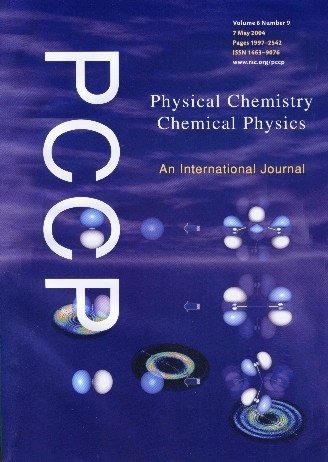Phys. Chem. Chem. Phys. vol. 6, isuue 9 (May 2004)
|
[Description in the journal format] |
The cover of issue 9 shows an artist’s view of the s&p model treatment of negative-ion photodetachment. The electron waves shown are responsible for the angular anisotropy of the photoelectron images, which are depicted as islands floating among water waves. The first of the three photoelectron images (islands) corresponds to 400 nm photodetachment of S2–, while the second and third are obtained in 267 and 800 nm detachment from CS2–, respectively. The molecular orbitals (shown in different lab-frame orientations) on the right are the a1 HOMO, b2 (HOMO – 1) and a2 (HOMO – 2) of the anion. The s and p orbitals on the left represent the s&p-wave expansion of the free (photodetached) electron formed via the a1–1, b2–1, and a2–1 photodetachment channels (laser polarization is assumed vertical). The corresponding photodetachment bands can be seen in the middle photoelectron image below. Image kindly supplied by A. Sanov, Department of Chemistry, University of Arizona, Tucson, AZ, USA. Cluster anions: Structure, interactions, and dynamics in the
sub-nanoscale regime |
